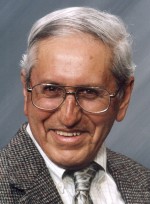One cannot help marvel at the man who was formerly the archbishop of Buenos Aires, Argentina, named Jorge Mario Bergoglio and now known as Pope Francis.
When he came to the conclave in Rome following the resignation of Pope Benedict XVI on Feb. 28, 2013, he could not have dreamed of being Pope Benedict’s successor. But suddenly, on March 13 of that year, he was elected and, at age 76, faced his greatest challenge as a Jesuit priest, pastor and bishop.
A quote from Pope Francis that appeared on the eve of his visit to the United States perhaps illustrates best how he has faced his enormous responsibility. It appeared in the comic strip Mutts by Patrick McDonnell on Sept. 21 and says: “Rather than a problem to be solved, the world is a joyful mystery to be contemplated with gladness and praise.”
[hotblock]
As he went about visiting the mighty and the humble in Cuba and the United States, those words best explain his joy and his humility. He saw everyone he met, from Fidel Castro to President Obama, from the members of Congress to the delegates of the United Nations General Assembly, from the students at a school in East Harlem to the inmates of a prison in Philadelphia, as being endowed by an innate dignity worthy of respect.
In today’s world, that insight is not easy to accept. Yet, what the pope seemed to be telling us during his visit is that the process nations and political leaders follow in trying to solve problems is deeply flawed.
Demonizing, invading, destroying, isolating, embargoing, imprisoning — all of these steps do not work. Pope Francis is humbly illustrating another way, based on the Gospel. It nurtures hope that once intractable problems can be solved.
Our Lady Queen of Angels School in the East Harlem neighborhood of New York City is one place where hope and excitement were palpable the week of the papal visit. Pope Francis chose to come to the school because its students, largely immigrant and underprivileged, are among the population he sees as most deserving of attention and assistance. The neighborhood is predominantly Hispanic and black.
According to Tina Susman of the Tribune Newspapers, the Harlem school has 290 pupils from kindergarten to the eighth grade. The income of most of the families is low enough to qualify them for financial aid.
The pope spoke with a few students, selected by lottery, and also with dozens of refugees and immigrants, some of whom came to the U.S. as unaccompanied minors. One can only imagine how the encounter with Pope Francis influences the lives of those students and other young people fortunate enough to meet him. At a minimum, they will remember it for the rest of their lives, perhaps inspiring them to lives of service.
I once met former President Jimmy Carter at a meeting on a snowy day in Washington, the only president with whom I was able to shake hands. It is a moment I will never forget.
Pope Francis gave more than a dozen talks during his visit to the United States, quite an accomplishment for a 78-year-old man. Four of them were in English, which is not his native language and thus a special challenge. But he went at it with the same joy evident in everything he does.
To every generation — the old, middle aged and young — he is an inspiration, sowing hope as he pauses to touch someone or even as he goes by in the popemobile. We hope we will have him ad multos annos!




Share this story